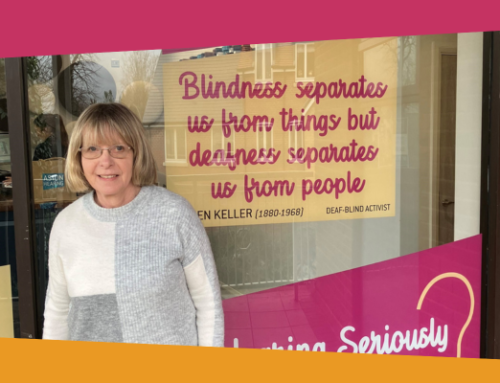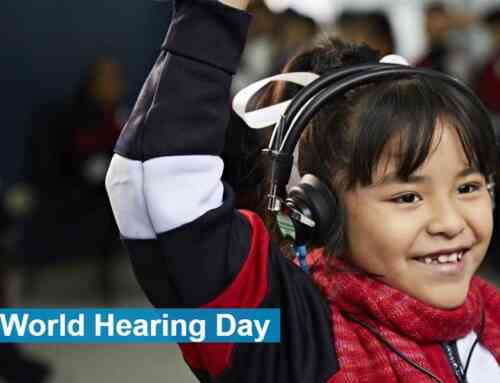The hardest virtual communication method is often group video calls, especially with non-family members and is often used in a professional capacity. To help you improve your participation in these meetings we decided to put together our top tips for maximising what you hear in this challenging situation.
1) Make sure you have good quality, fast bandwidth, internet connection. This means that there is less likely to be a delay between video and audio and there is less chance of blurry visuals which can make lip reading almost impossible.
2) Start off with introductions so you’ve got time to adjust your volumes (hearing aids / computer etc) or ask others to put their cameras in a position where the lighting on their face is better.
3) If you wear hearing aids, ensure your aids are fully charged or with a fresh battery to avoid mid-meeting low battery panic.
4) Try to keep to smaller groups where possible and suggest that everyone mutes their microphones unless actively talking. This not only reduces background noise but also discourages people from interrupting or talking over each other.
5) If there are lots of participants, having a shared screen (small visuals of all participants at once) can make it very difficult to lipread. Switch the screen option to “speaker only” so you get a large, clear view of the person speaking.
6) Connect your hearing aids directly to your computer or phone via a bluetooth link if possible. This means the sound quality is better and is going directly into your ears so cuts out the background noise around you.
7) Record the meeting for later so that if you realise, after the meeting has finished, that you missed something you can easily rewatch and have another go at hearing it.
8) If you are in a large group find a “buddy” who will make a record of things they think you are missing to send to you post-meeting. You could agree a subtle signal beforehand so they know exactly when you are not hearing.
9) Our final tip is, if you feel comfortable, tell everyone involved when you introduce yourself that you have a hearing loss and would appreciate clear speech and video – we’ve never experienced anyone unwilling to accommodate this and it often helps other members of the participating group hear better too.


Within lots of these video call platforms there is the option of captioning; it is a paid feature in zoom with AI listening to the speech and trying to translate it to written word. Microsoft teams also has a captioning option but when experimenting with it we’ve found it clumsy, delayed and full of confusing errors. There are specific captioning programs that you can use alongside video calling but the reviews for them aren’t inspiring! If you feel like giving it a go we recommend doing so with friends and family first to familiarise yourself with how it works, any delay there might be and to notice any problems that might crop up.
Even utilising one of these tips can make a big difference to how much you can get from this tricky type of soundscape so good luck, stay safe and we’d love to know if you’ve discovered any other tips that have helped you.





